By Dan Weisz
This is the last in the series of emails with photos that were taken at The Pond at Elephant Head. It features one of my favorite desert birds, the Pyrrhuloxia! Pyrrhuloxia are related to, and look similar to their cousins the Northern Cardinal but Pyrrhuloxia are birds of the hot deserts of the southwestern United States (and Mexico).
The female Pyrrhuloxia below is sitting on ocotillo. That parrot-like, curved beak distinguishes this bird from a Cardinal.
(For those of you who are not from Tucson, the Ocotillo is a plant indigenous to our part of the world. It is not a true cactus even though it has thorns- it is more of a shrub.)
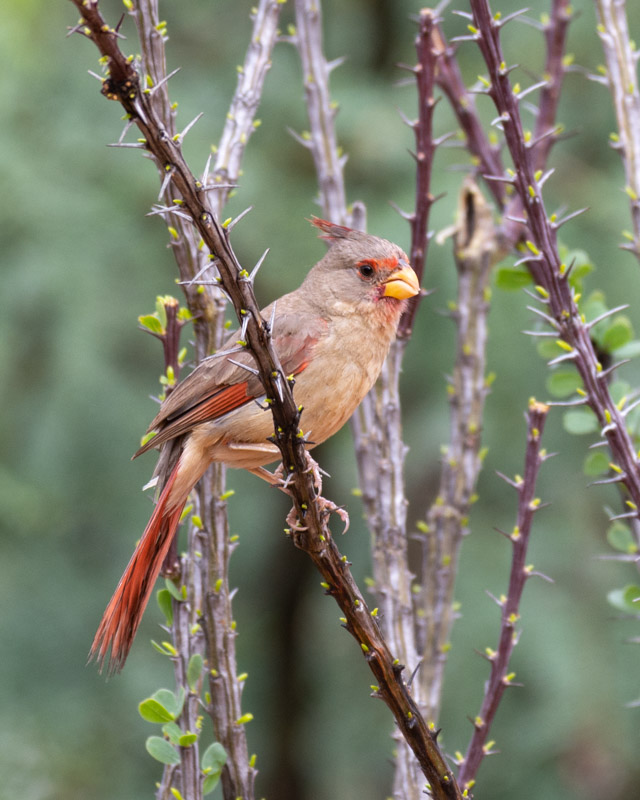
The male Pyrrhuloxia has a bright red face. That thick beak aids in cracking open seeds, a primary food source much of the year.
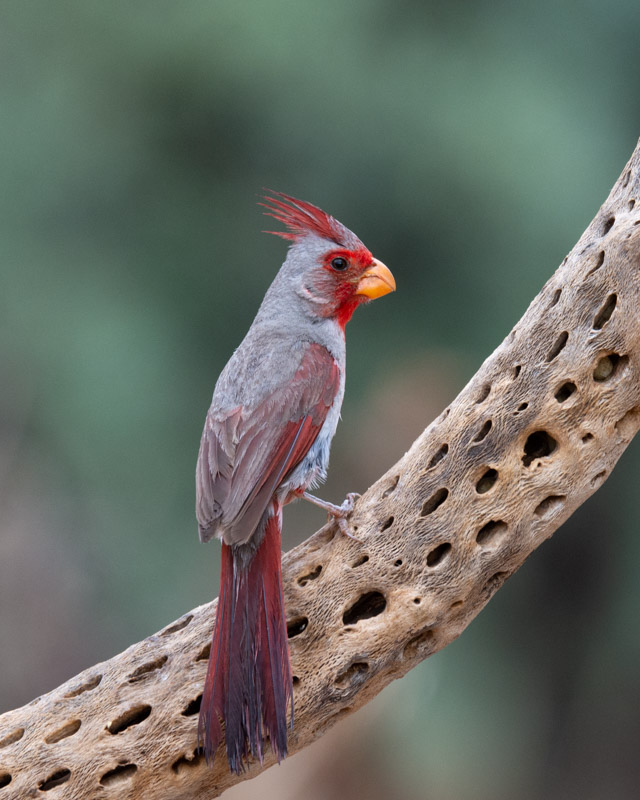
Some male Pyrrhuloxia have a full red breast. The sides are still gray but this bird’s color is practically brilliant. That down curved beak makes it look grumpy.
(Another Ocotillo fact: when there is enough moisture in the soil, small leaves will sprout from the ocotillo’s stems as in this picture. When the water dries up, the leaves will fall and the plant will rely on the chlorophyll inside its stems to photosynthesize. This can happen several times during the year depending on the amount of rainfall.)
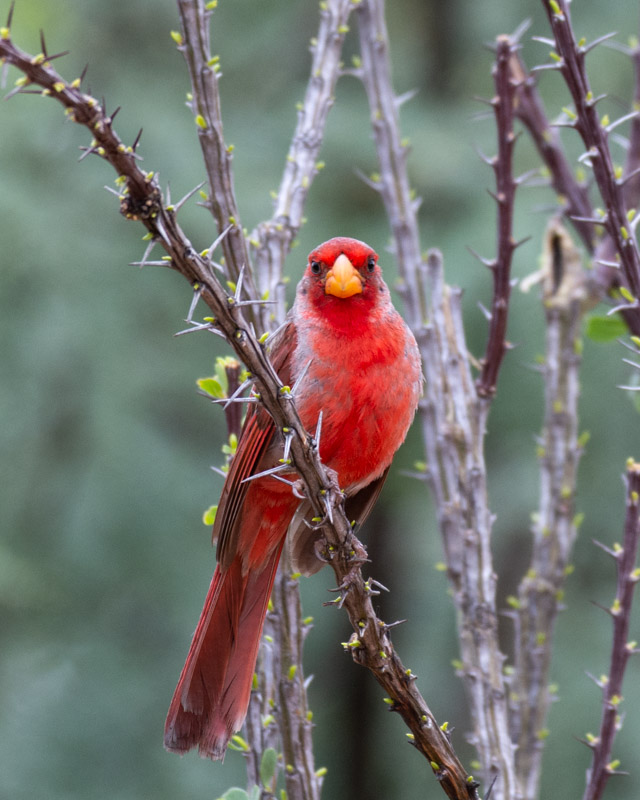
Here is a different male, demonstrating the variation in breast color. (You can see brand new leaves sprouting on the ocotillo in response to rain during the prior few days.)
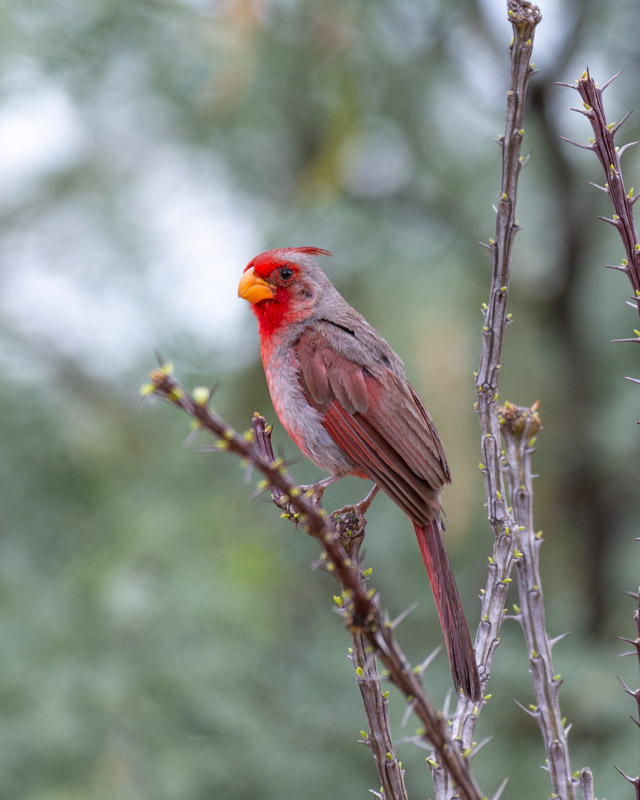
A head shot! His crest is a bit longer than a typical Cardinals, but the gray color and curved beak shouts “Pyrrhuloxia”. The origins of the word Pyrrhuloxia are a blend of the Greek words “pyrrhus”, meaning flame-colored or red, and “loxuos”, meaning crooked. This is a flame-colored bird with a crooked beak.
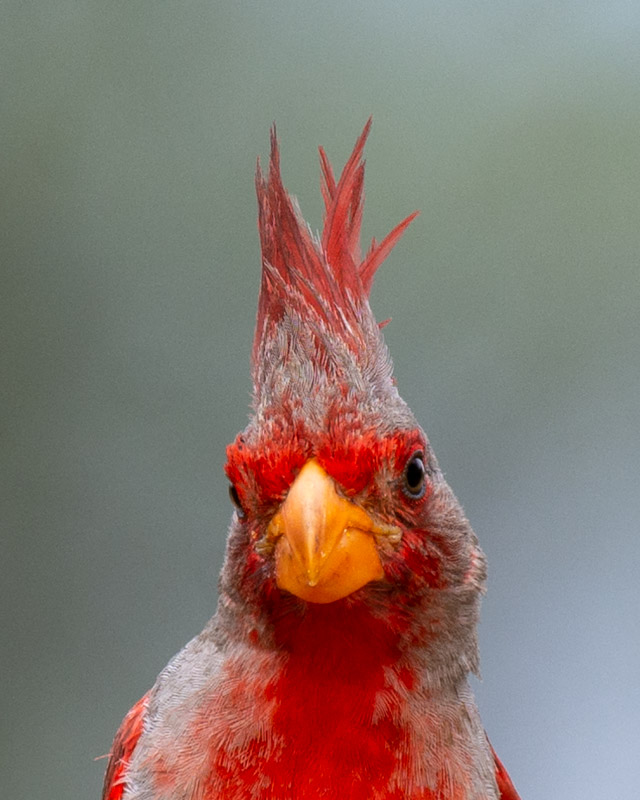
Below is the same bird with a different pose on a cholla skeleton.

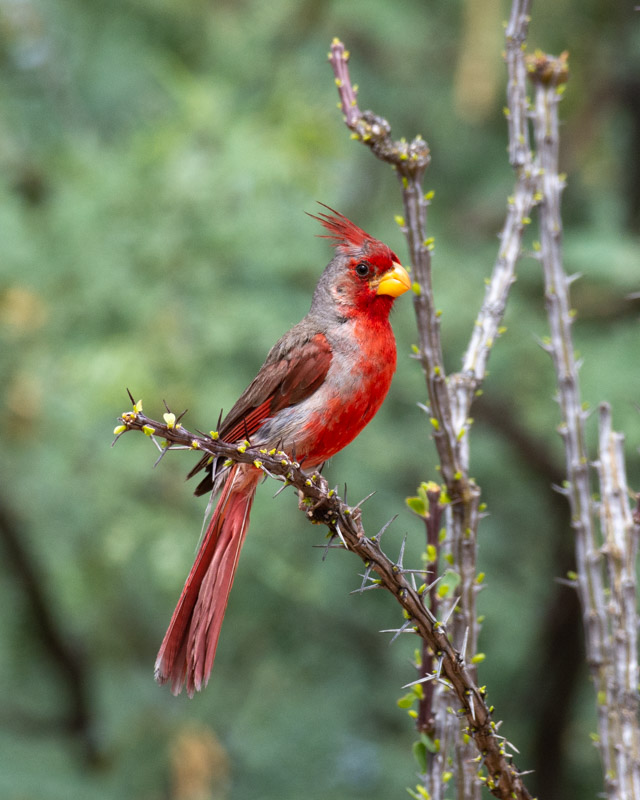
And finally, another female on saguaro ribs, seeming to check us out. This is a fitting farewell to The Pond.
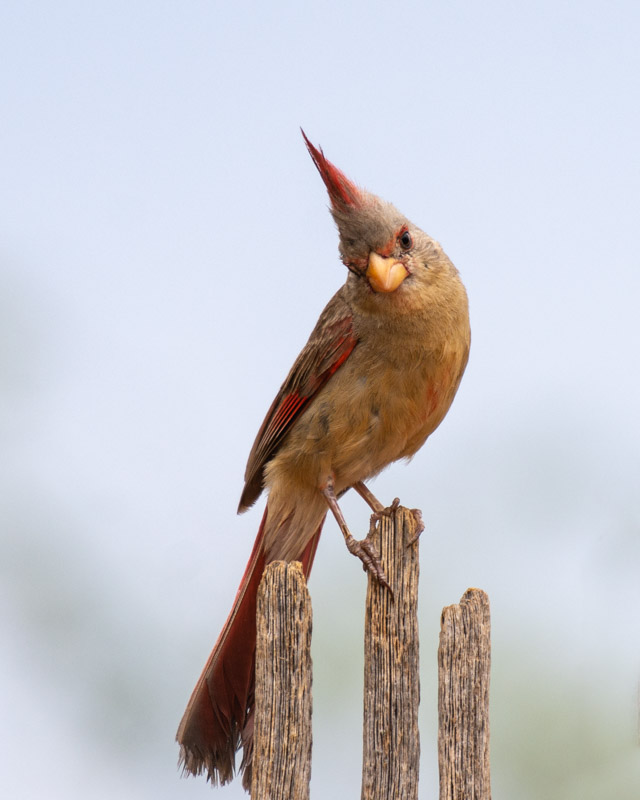
Return to Foothills Clusters Home
